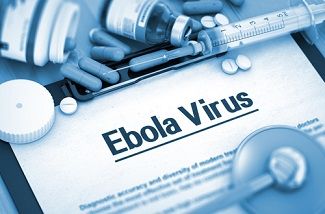Although Ebola is not currently present in the United States, the blood-borne disease with the high mortality rate and severe disease characteristics has been seen frequently over the last 10 years in parts of west Africa such as Uganda and the Democratic Republic of the Congo. And during the years of 2014-2016, the Ebola epidemic saw outbreaks in Guinea, Liberia, and Sierra Leone.1 The 2014 Ebola outbreak was larger than any previously reported. When it was declared over in 2016, the disease had claimed 11,325 lives among the 28,652 reported cases.1
Of the 4 species of Ebola viruses that cause disease in people, Zaire ebolavirus (EBOV) and Sudan ebolavirus (SUDV) have caused more than 30 known outbreaks in the last century, killing more than half of those with the disease.1
Movement in Vaccine Development
Vaccine developers and researchers provided a quick response in studying investigational Ebola vaccines during this period. Specifically, the Heterologous cAd3-Ebola and MVA-EbolaZ vaccines were found to be safe and immunologic in phase 1/1b studies conducted in the US and Uganda.2
The results were published in npj Vaccines.
The study looked at heterologous prime-boost regimen involving a chimpanzee adenovirus 3 vectored Ebola vaccine [either monovalent (cAd3-EBOZ) or bivalent (cAd3-EBO)] prime followed by a recombinant modified vaccinia virus Ankara EBOV vaccine (MVA-EbolaZ) boost in phase 1/1b randomized open-label clinical trials in healthy adults, according to the investigators.2
“The three vaccines (cAd3-EBO, cAd3-EBOZ, and MVA-EbolaZ) tested in these trials were safe and tolerable alone and in combination,” the investigators wrote. “The prime-boost regimen induced EBOV and SUDV GP-specific antibody responses and cell-mediated responses, which are associated with protection against viral infection and durability of protection, respectively.”2
What You Need to Know
During the Ebola outbreak of 2014-2016, significant strides were made in the development of Ebola vaccines.
The flexibility of vaccination schedules, particularly in administering booster doses, has been demonstrated.
The availability of multiple vaccines and flexible vaccination strategies holds important implications for public health initiatives.
In additional commentary provided by several of the phase 1 investigators, they offered further insights on the vaccines. “A unique aspect of the cAd3-Ebola and MVA-EbolaZ vaccine regimen is that each dose elicits robust antibody titers lasting for at least 48 weeks,” they wrote in the commentary. “This regimen is expected to provide rapid protection after cAd3-Ebola that can then be boosted with MVA-EbolaZ any time from 6 weeks to a year after cAd3-Ebola.”3
They noted a phase 2 study of the trial with the cAd3-EBOZ vaccine evaluated 500 adults. “It was found to be safe, and a single dose increased Ebola-specific antibody levels by 1 month after vaccination which remained elevated for up to a year,” the commentators wrote. They had plans to include a phase 3 study, but the incidence rate of Ebola declined in Liberia before the efficacy was determined and the outbreak was declared over in June 2016.3
Booster Study
An FDA approved Ebola vaccine Ad26.ZEBOV (Zabdeno) has been the subject of many studies. And more recently, in another study, a booster dose of the Ad26.ZEBOV vaccine was performed. The additional dose was administered either 1 year or 2 years after the initial vaccination, and exhibited a comparable and robust humoral immune response. This indicates that the timing for booster administration can be flexible, allowing for tailored vaccination schedules that could accommodate varying levels of Ebola virus exposure risk among populations.4
The findings of the phase 2 study support consideration of the Ad26.ZEBOV booster for individuals at risk of Ebola, such as healthcare providers, up to 2 years after the primary vaccine.4
What Does it Mean?
The investigators noted that a variety of different vaccination strategies could be useful, especially as Ebola outbreaks can be unpredictable. Public health initiatives can include routine vaccinations in regions where Ebola virus disease is known to occur, vaccinations of frontline workers during outbreaks, emergency vaccinations of people in outbreak zones, as well as the availability of multiple vaccines for different individuals.1
“Addition of the cAd3-EBO, MVA-EbolaZ vaccine regimen to the EVD vaccine portfolio would add flexibility and choice to the global arsenal of EVD vaccines,” the investigators concluded in their supplemental commentary.3
References
1.Experimental Ebola Vaccines Found Safe and Capable of Producing Immune Responses in Healthy Adults. NAID Now. April 3, 2024. Accessed April 4, 2024.
https://www.niaid.nih.gov/news-events/experimental-ebola-vaccines-found-safe-and-immunogenic?utm_campaign=+60039663&utm_content=&utm_medium=email&utm_source=govdelivery&utm_term=
2.Happe M, Hofstetter AR, Wang J, et al. Heterologous cAd3-Ebola and MVA-EbolaZ vaccines are safe and immunogenic in US and Uganda phase 1/1b trials. NPJ Vaccines. 2024;9(1):67. Published 2024 Mar 29. doi:10.1038/s41541-024-00833-z
3.Hofstetter AR, et al. Clinical Testing of the cAd3-Ebola and MVA-EbolaZ vaccines. Springer Nature Research Communities. March 29, 2024. Accessed April 4, 2024. https://communities.springernature.com/posts/clinical-testing-of-the-cad3-ebola-and-mva-ebolaz-vaccines
4. Abene S. Long-term Immunogenicity and Booster Response in Ebola Vaccine Regimen. Contagion. March 28, 2024. Accessed April 4, 2024. https://www.contagionlive.com/view/long-term-immunogenicity-and-booster-response-in-ebola-vaccine-regimen

